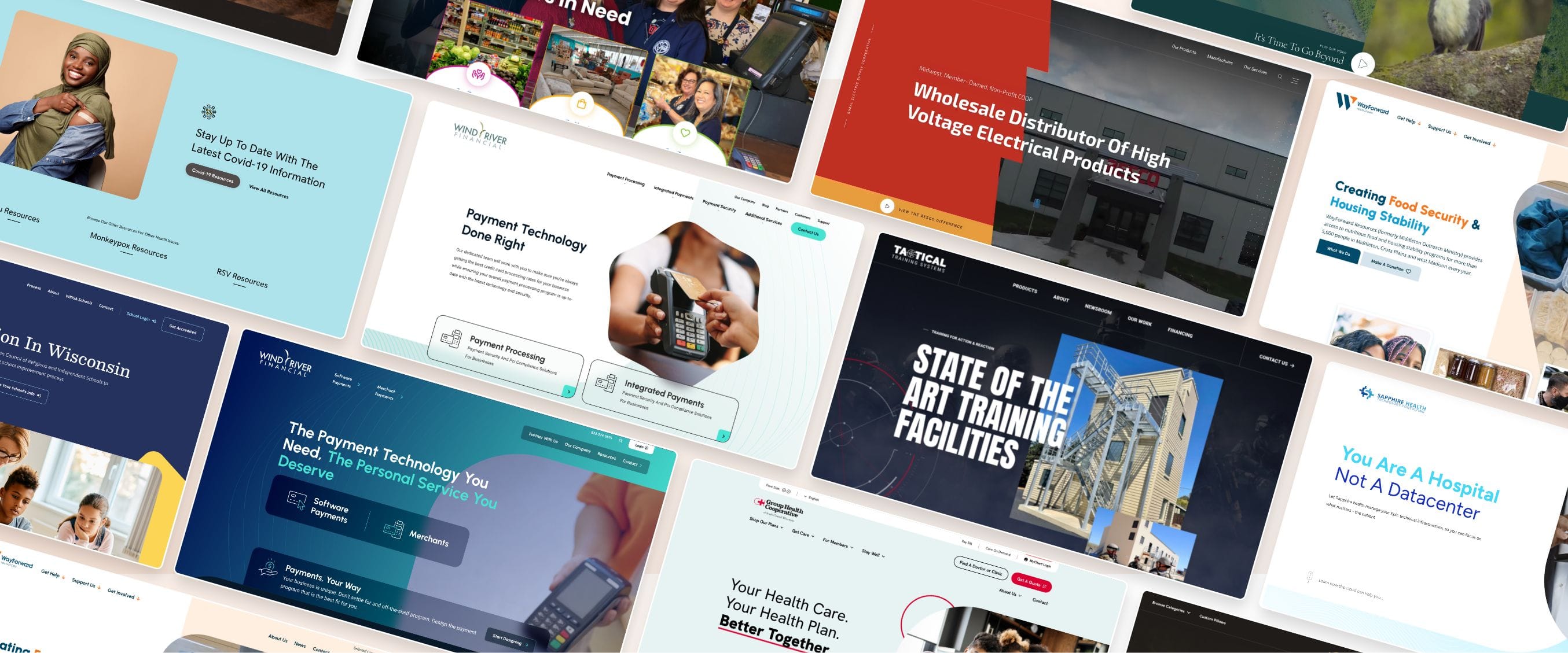Creative Website Design with Focus on Functionality
Creative Website Design with Focus on Functionality
Blog Article
Top Tips for Producing an Impactful Internet Site Layout That Transforms
To achieve this, one need to take into consideration a range of elements, consisting of recognizing the target audience, focusing on individual experience, and enhancing for mobile systems. The critical use of compelling call-to-actions and a distinct visual power structure plays a vital duty in assisting users through their journey.

Understand Your Target Audience
Recognizing your target market is fundamental to effective internet site style, as it lays the foundation for developing an appealing individual experience. Identifying that your individuals are, including their demographics, choices, and behaviors, allows designers to customize the website's web content, layout, and performance to satisfy certain demands.
Conducting complete market research is essential in this process. Surveys, interviews, and analytics can supply beneficial understandings right into individual expectations and pain factors. By assembling this information, developers can create individual personalities that stand for different sections of the audience, ensuring that layout choices are educated and appropriate.
Moreover, understanding the target audience assists in picking proper layout aspects such as color systems, typography, and images that reverberate with customers. A web site that talks straight to its target market promotes a feeling of link and count on, urging longer check outs and greater conversion prices.
Ultimately, a user-centered technique to internet site design not only improves individual satisfaction however likewise sustains organization objectives by driving interaction and commitment. By focusing on the demands and preferences of the target audience, a web site can properly serve its purpose and achieve preferred results.
Prioritize Individual Experience
To boost the total effectiveness of a web site, focusing on customer experience (UX) is important (Website Design). A well-designed UX makes sure that site visitors can navigate the website effortlessly, find info promptly, and engage with material meaningfully. This brings about enhanced customer contentment and higher conversion rates
Begin by carrying out intuitive navigation. Menus ought to be realistically structured, enabling customers to find key locations of the website with minimal initiative. Uniformity in layout components, such as color systems and typefaces, promotes experience, which is vital for preserving customer involvement.
Additionally, consider the packing speed of your web site. A hold-up of just a few seconds can cause considerable drop-offs, as individuals are less most likely to wait for a slow-loading page. Enhancing photos and maximizing code can boost efficiency and maintain visitors.
By focusing on customer experience, you not only produce an extra delightful atmosphere for site visitors yet additionally enhance your brand name's trustworthiness. Ultimately, a focus on UX is an investment in the long-lasting success of your web site.
Maximize for Mobile Instruments
Optimizing for smart phones is vital in today's electronic landscape, where a raising variety of users gain access to web sites with mobile phones and tablet computers. A mobile-friendly layout not just boosts customer experience but also plays a significant role in improving online search engine positions. To accomplish this, it is important to take on a receptive style that immediately adapts to different display dimensions and alignments.
%20%5B60%25%5D.jpg)
Filling rate is one more vital element; mobile users are typically much less individual and expect fast accessibility to info. Optimize images and utilize web browser caching to improve efficiency. Ultimately, examination your site on multiple tools and display resolutions to determine and rectify any kind of prospective usability concerns. By focusing on mobile optimization, you ensure that your internet site continues to be affordable and successfully engages a broader audience.
Usage Engaging Call-to-Actions
A site's effectiveness frequently rests on its capacity to lead visitors toward preferred activities, making engaging call-to-actions (CTAs) important parts of style. CTAs function as the critical factors that guide users to involve with the website, whether that implies buying, registering for a newsletter, or downloading a resource.
To develop effective CTAs, quality is vital. Usage succinct language that plainly connects the activity you desire the user to take. Phrases such as "Begin," "Sign Up Free," page or "Shop Now" not only communicate urgency yet additionally remove ambiguity. The placement of CTAs is equally essential; they ought to be tactically positioned throughout the web page to guarantee they are quickly noticeable, specifically in high-traffic locations.
Additionally, the style of CTAs need to stand out without being noticeable. Employ contrasting colors and clear fonts to ensure they catch focus. In addition, take into consideration using directional cues, such as arrows or pictures, to direct individuals toward these buttons. By concentrating on these elements, services can considerably improve individual interaction, driving conversions and ultimately achieving their site's goals.
Emphasis on Visual Power Structure
Effective site style depends heavily on a well-structured aesthetic power structure that guides customers with content flawlessly. By arranging elements in a way that prioritizes details, designers can enhance user experience and promote decision-making. This involves making use of dimension, shade, contrast, and spacing purposefully to accentuate one of the most vital parts of a website.
Making use of bigger fonts for headings and subheadings establishes a clear difference between different areas, allowing customers to scan material effortlessly. In addition, utilizing different colors for switches and calls-to-action can capture customer attention and motivate interaction. Whitespace is an additional vital part; it avoids mess and enables individuals to concentrate on key messages without disturbances.
Images and graphics must complement the text while likewise sticking to the recognized power structure, enhancing the general message (Website Design). Uniformity in layout elements, such as color pattern and typography, more reinforces the visual hierarchy, making navigating instinctive

Final Thought
In conclusion, effective website design demands a comprehensive understanding of the target audience, prioritization of customer experience, and mobile optimization. Ultimately, a well-executed website layout offers as an essential element in driving user actions and achieving business objectives.
Report this page